Due to the huge supply shortages of face masks and other PPE this year, it's no surprise that counterfeit options are making a big debut on the market.
When buying PPE it's important to know that it provides the right level of protection. So the question is, how do you tell a real certified item of PPE from a fake one?
This blog post is going to share the differences between a fake item of PPE and a real one and how you can tell the difference. When talking about PPE, face masks play an important role. So in this blog post, we are specifically going to tell you everything you need to know to differentiate between real vs. fake face masks.
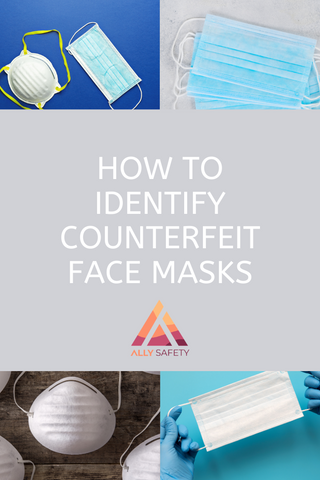
How to Identify Counterfeit PPE?
On July 27th the CDC (Center for Disease Control and Prevention) updated their guidance to help consumers identify products that are falsely marketed and sold as being NIOSH approved respirators. NIOSH stands for the National Institute of Occupational Safety and Health. It's a branch of the CDC. In this blog post, we're going to focus on the CDC's guidance.
Part 1: How to Identify Counterfeit N95’s?
Let's say you're online and you're searching for new surgical masks or N95 respirators to be used in the workplace.
How can you tell if you've got a good batch or not?
Well, there are a few key, easy things to look for.
#1 Check the CDC Website
In the most recent report the CDC noted that in the future when NIOSH becomes aware of counterfeit respirators, they will post the manufacturer's details on their website to alert purchasers. The link to the page is here.
#2 Look for the NIOSH Approval
NIOSH approved respirators have an approval label on or in the packaging of the respirator. You can expect to find it on the box with the user's instructions.
They will often look like this.

Having a NIOSH certification is such an essential factor today, therefore, most manufacturers who carry this certification are going to be advertising it big time.
In addition, an abbreviated approval should be visible on the items of PPE themselves. This is usually included in the product images, but not always. You may need to check the product description as well.
Once you have the approval number which starts with a TC, you can verify it by going to the NIOSH certified equipment list or to a trusted source.
#3 Check for an FFR Designation
The third item to note is that NIOSH approved filtering facepiece respirators or FFRs will always have one of the following designations:
Here's an example:
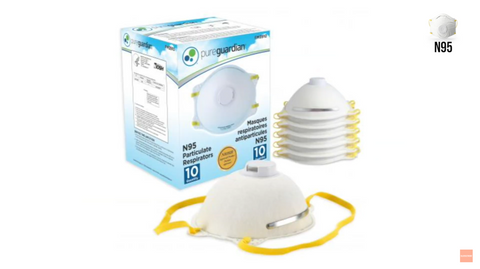
Now, of course, if you're wanting protection from the Coronavirus, you're definitely going to want the N95 and none of the other designations. However, if it is a NIOSH certified mask there will always be a designation listed.
Along with those 3 things, we've got a few more that apply specifically to N95s.
#4 Markings on the Respirator
If there are no markings at all on the filtering facepiece respirator, it's probably not NIOSH approved.

#5 No ‘TC’ Marking
No TC or code marking on the facepiece or the headband is also a red flag. If there are no NIOSH markings at all, it definitely doesn't look good.
#6 NIOSH Misspelled
Another thing to keep in mind is the word NIOSH needs to be spelled correctly. Remember it's N-I-O-S-H. If any of those letters are out of place, it's probably a pretty good indicator that it's a fake.
#7 Unusual Fabric or Decoration
Another clear giveaway is the presence of decorative fabric or other decorative add-ons. For example, NIOSH would never approve of sequins.
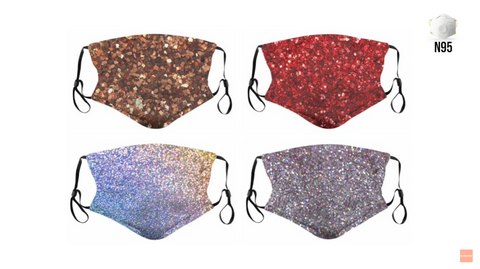
#8 N95’s are Not Approved for Children
Remember NIOSH stands for the National Institute of Occupational Safety and Health, meaning that they focus on the working population. Since children rarely have an occupation, they aren't a population that NIOSH focuses on.
#9 Earloops Instead of Headbands
The last one is if an N95 has earloops instead of headbands, it’s a fake. Surgical masks and KN95s have earloops.
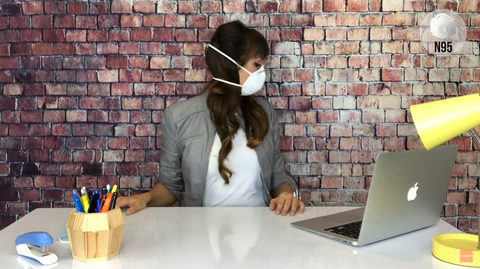
The big difference is an N95 that's approved by NIOSH won't have earloops, it'll have headbands. They're completely different to put on because they have to wrap around your head.
Before You Purchase Check the CDC Website
If you're buying N95s, my advice would be that before you make the purchase, do a quick check on the CDC’s website. Many of the examples the CDC shows actually look pretty legit.
Part 2: Identifying Counterfeit Surgical Masks
N95s have a more stringent approval process because they're technically considered a respirator. A surgical mask, on the other hand, is meant more as a barrier to prevent your own droplets from escaping and providing a moderate amount of protection for you personally.
#1 Will You Require Certified Masks?
With surgical masks, one of the first things you should assess is what level of protection is going to be required for the surgical masks you need. Surgical masks are generally used in medical settings where a moderate amount of protection is needed.
That being said, most of us don't have to worry about blood-borne pathogens in our normal day-to-day roles. So purchasing surgical masks that aren't intended for medical use can actually be acceptable for those of you who work in medical environments, though it makes sense to be more discerning.
#2 No NIOSH Approval
NIOSH doesn't approve surgical masks. As the National Institute of Occupational Safety and Health, they tend to deal more with heavy industry and less with medical items.
That being said, some manufacturers that do have NIOSH approval, will try to pass off their surgical masks as NIOSH approved. When, in fact, you can't really get a surgical mask NIOSH approved.
What to do in that case?
Check out some of the other designations.
#3 Know Which Standards Apply
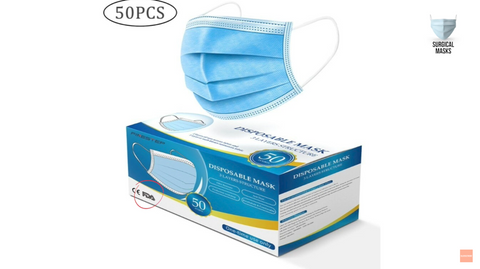
Surgical masks are subject to a Food and Drug Administration (FDA) consensus standard and the American Society for Testing and Materials (ASTM).
Unfortunately, with the FDA the best that you can do is email them at the address that they have provided [FDA-COVID-19-Fraudulent-Products@fda.hhs.gov].
When it comes to checking if surgical masks are ASTM rated, it should be listed on the package with the level next to it.

- Level 1 is for a low risk of fluid exposure.
- Level 2 is for a moderate risk of fluid exposure.
- Level 3 is for a high risk of fluid exposure.
However, I couldn't find anywhere that ASTM is tracking counterfeit products or where they're trying to let customers know if a manufacturer is using ASTM approved products. So this one is a little bit harder to pin down.
What if You Accidentally Bought Counterfeit PPE?
If you purchase PPE items and when they arrive they appear to be counterfeit does that mean that they won't provide any protection?
No, not necessarily, but the difficult thing to say is to what standard they've been produced?
If you can get NIOSH approved N95s, that's the best option because the N95 is a filtering facepiece respirator and you're relying on it for a high level of protection.
On the other hand, surgical masks are not intended to provide a seal and are best used to prevent your own respiratory droplets from escaping while also providing a reasonable amount of protection from other people's respiratory droplets.
So it really depends on what type of work you do. The best advice I can give is to conduct a hazard assessment and get a clear idea of the hazards of your workplace and then provide the PPE that makes the most sense based on those hazards.
I hope this blog post has helped you to spot a counterfeit item when it comes to Coronavirus PPE. If it did, please subscribe to see more. Until next time, stay safe and stay healthy out there.
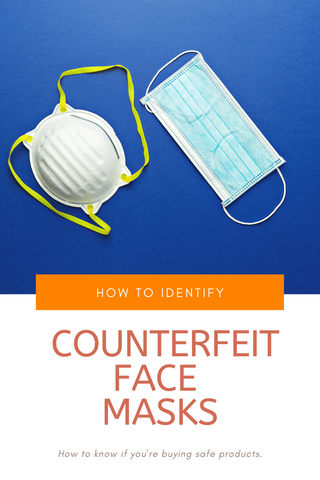
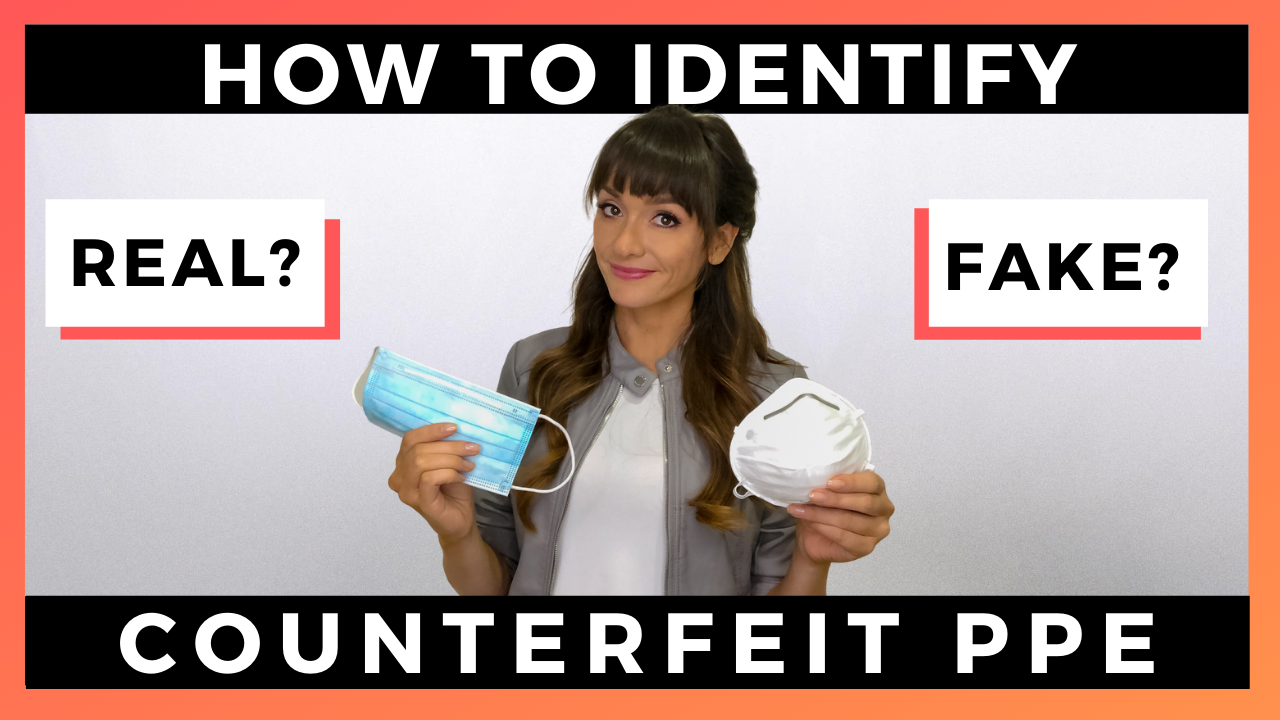


1 comment
Malik Sutton
Hi Rachel, this was one of my favorite videos and you did an excellent job breaking down the difference between a real mask and fake one.
I certainly took notes from this.
Leave a comment
All comments are moderated before being published.
This site is protected by hCaptcha and the hCaptcha Privacy Policy and Terms of Service apply.